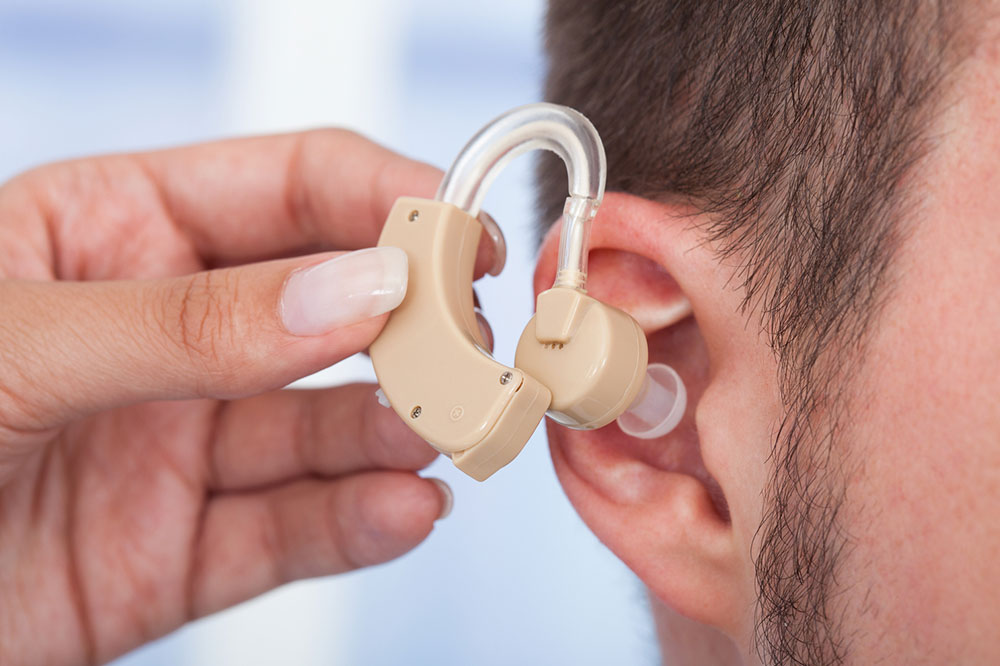
Hearing aids – Functions, types, and how to choose the right one
A hearing aid is a device that uses a battery to power itself and can be worn behind or inside the ear to amplify sounds. These hearing aids are used by those suffering from hearing loss and depending on individual needs, the amplification can be adjusted. This can be extremely helpful in improving day-to-day activities like listening to music, participating in conversations, watching movies, and such. Let’s know more about these devices.
Hearing aid functions
There are three main parts of a hearing aid; the microphone, the amplifier and the speaker or the receiver.
The microphone is responsible for capturing the sound around you. It catches the sound waves as they enter the outer region of the ear. As they enter the ear, these sound waves are then converted into electrical or digital signals with the help of an amplifier. The receiver then sends these converted signals down to the ear canal, which can then be heard by the person.
The batteries used in the hearing aid come in two types:
Disposable: These need to be changed every 3 days to three weeks.
Rechargeable: These can last up to 5 years.
Types of hearing aids
Behind the ear: BTE hearing aids have all the parts fit inside a curved plastic device which then sits behind the ear or sometimes over the ear as well. There is a mold attached to the plastic piece which fits into the ear canal area comfortably and amplifies the sounds captured. These molds were designed to completely fit the ear opening leaving no space, however, with time, this design led to added pressure in the canal, and the mold is slightly smaller than the ear canal.
Receiver in canal: Also known as RITE (Receiver in the ear) hearing aids, this type of device has a microphone and amplifier that rests behind the ear while the speaker or receiver goes into the ear canal. This device does not need an ear mold like before. These kinds of hearing aids are also less heavy, making them more comfortable to wear.
In the ear (ITE)
ITE hearing aids are comparatively smaller than traditional hearing aids. They also do not use a mercury battery and instead have substituted them with a zinc-air battery which is safer, long-lasting, and also environmentally friendly. All the parts of the hearing aid are designed into a small plastic case that is custom-made for the patient to fit the shape of the ear.
Completely in canal: CIC hearing aids were developed in 1993 and are much more sophisticated than before. These hearing aids are positioned inside the ear canal and are almost invisible, hence also come with the name invisible-in-the-canal. They have a short string that hangs out of the ear canal for easy removal of the device, but this string is strategically placed out of sight. They are lightweight and extremely easy to wear.
Popular hearing aids
Some of the most popular brands include Jabra Enhance costing $1,195-1,995; Lexie ($799-$999); Eargo ($1,450-$2,950), Audicus ($1,398-$2,998), Audien Atom Pro ($249), Phonak Audeo Lumity ($2,498-$4,598), MDHearing ($299-$699), Signia Silk X ($1,998-$3,998), Wides Moment ($2,798-$4,598) and ReSound Omnia ($3,200-$6,500).
Some of these brands have disposable and rechargeable battery options, so check about the particular device. Most also have remote support or a phone application to help adjust technicalities. They all include a warranty. However, every company has its own warranty policy, so it is always advisable to read the fine print.
Tips for choosing the right hearing aid
Before choosing a hearing aid, always get a checkup done first to rule out any other causes of hearing loss that can be corrected; for example, excessive ear wax or infection. Also, consult an audiologist who will perform some examinations to check your hearing abilities and guide you accordingly.
- Ask for a hearing aid on a trial period from the salesperson. It usually takes a while to get used to the hearing device sitting in your ear, and at the start, it may be uncomfortable for you. Make sure to try some hearing aids during the trial period and then make an informed decision.
- If you have been diagnosed with hearing loss, which could get worse with time, consult with the sales executive if the hearing aid can amplify sounds further down the line in the coming years. It will be a waste of money if you have to buy disposable hearing aids every year constantly.
- Always check for the warranty on the product. Some companies provide 3 years, others 1 year, and some may not provide any long-term warranty. This can be troubling, and you don’t want to invest in a device that may give up at any point with no hope of fixing.




